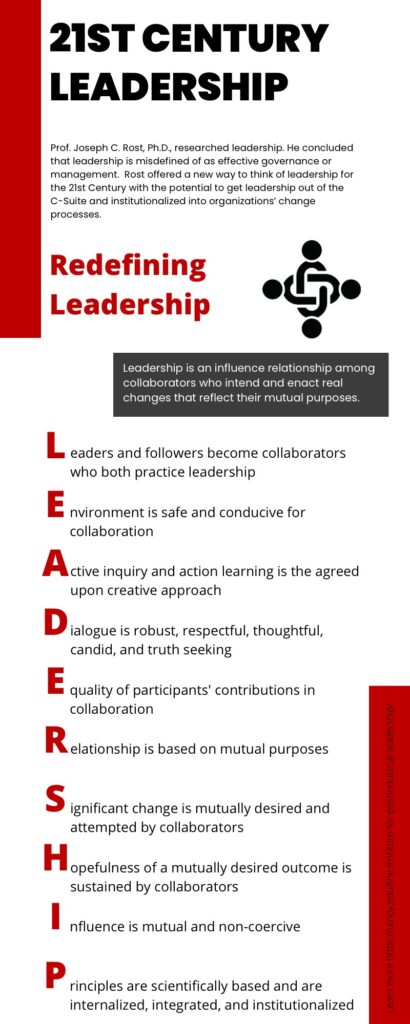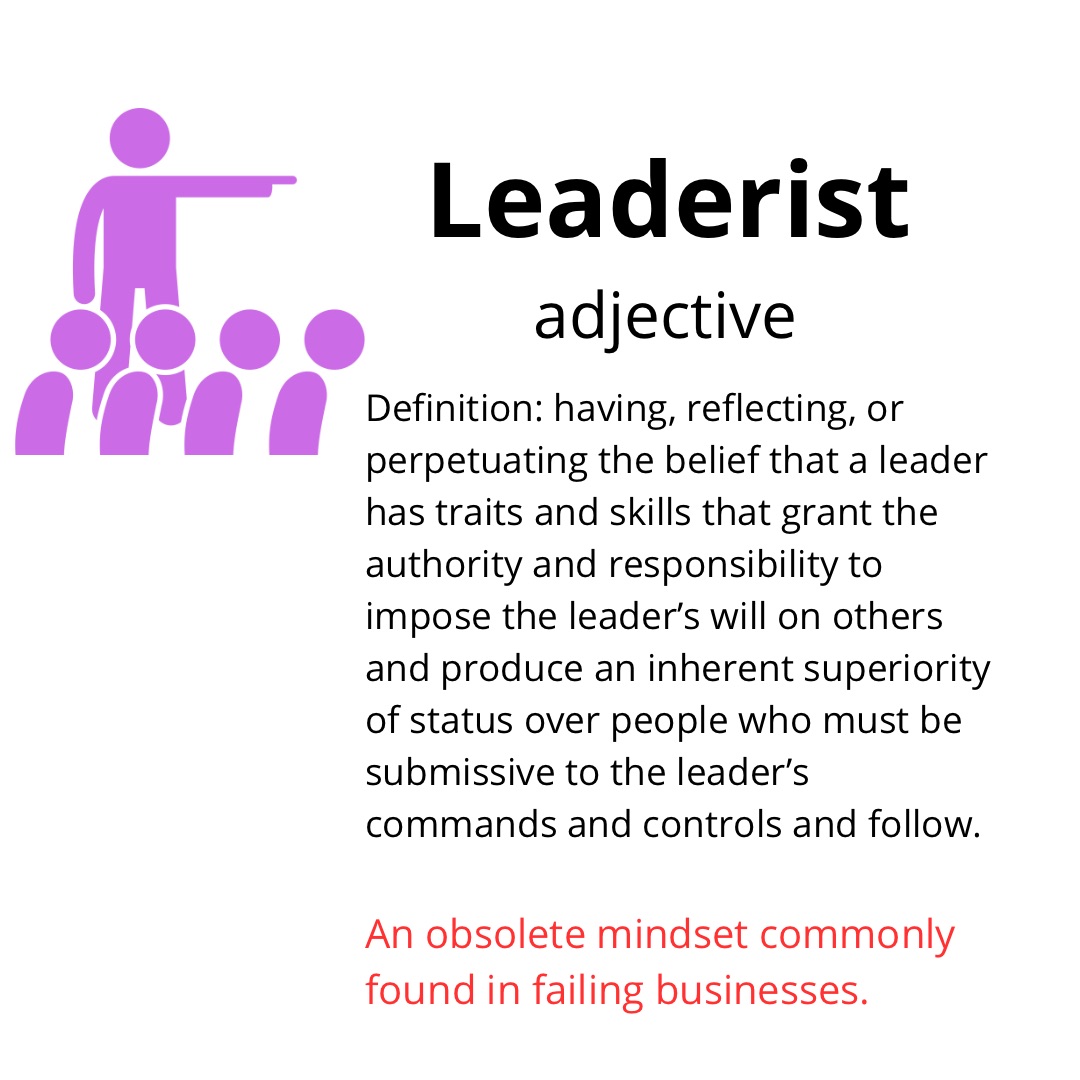The late James MacGregor Burns, Ph.D. wrote in his seminal 1978 book, Leadership, “If we know all too much about our leaders, we know far too little about leadership. We fail to grasp the essence of leadership that is relevant to the modern age and hence we cannot agree on the standards by which to measure, recruit, and reject it… Leadership is one of the most observed and least understood phenomena on earth.” p. 2.
A search of Merriam-Webster’s Online English Dictionary does not offer a business use case for the word leader.
We have allowed the words management and leadership and leader and manager to become synonymous when they are descriptions of different phenomena.
Harvard Professor Barbara Kellerman, Ph.D. wrote in her 2012 book, The End of Leadership,
“Hero-leaders are part of our collective psyche—they serve a psychological purpose. Mythologist Joseph Campbell wrote, “Freud, Jung, and their followers have demonstrated irrefutably that the logic, the heroes, and the deeds of myth survive into modern times.” Freud certainly was fixated on both leadership and followership, convinced not only that “the leader of the group is still the dreaded primal father,” but that the group itself, all groups, long for a strong leader. “The group,” he maintained, “has an extreme passion for authority”; and individuals have “a thirst for obedience.” Similarly, Jung developed a heroic archetype, a hero-leader who appears and reappears, everywhere, throughout human history.” p.3.
Burns and Kellerman both approach leadership from a political science perspective. The governmental context greatly influences their leadership paradigms and keeps them locked in a leader-follower relationship. One must contemplate the different organizational and role requirements of business and government to differentiate between the two distinct contexts.
In 1991, a little know researcher, Joseph C. Rost, Ph.D., a contemporary of Burns, published his book, Leadership For The Twenty-First Century. Rost offered a scientifically derived re-definition of leadership that dramatically changed the leadership paradigm for industrial to postindustrial. Rost defined leadership as, “an influence relationship among leaders and followers (later revised to collaborators by Matthew Chodkowski, Ed.D., Founder, of The Institute for Postindustrial Leadership at the University of Indianapolis.) who intend real changes that reflect their mutual purposes. p. 102. Chodkowski explains more at https://youtu.be/gOAn3huShys
Leadership is not synonymous with good or effective management. Leadership is nearly synonymous with collaboration. Leadership is a change-focused collaborative relationship among collaborators.. A postindustrial leadership paradigm creates clearly defined organizational roles and responsibilities which can be trained and developed.
We have an opportunity to clarify between manager and leader and between the distinctly different social phenomena of management and leadership and help our commercial organizations to evolve past the obsolete hero-worship of leaderism.

Leaders are not a more evolved or desirable aspirational elevation of managers. They each serve different roles of different situational value.
Managers are responsible for the ongoing organizational governance and administration. Managers seek organizational and operational excellence through the organization’s value-creation system.
A leader is a naturally willful person who is sensitive to and intolerant of feelings of dissatisfaction with the current or anticipated future situation. A leader can exist anywhere in an organization. A leader must be curious to explore situations to understand how they might alter them in ways the leader believes to be desirable. A leader must be courageous to voice their perspective in an influential way. A leader must be committed to the political process of persuasion and influence to win others over to their way of thinking. Leaders must be culturally savvy to navigate the system they wish to change successfully. A leader is wise to be self-aware of their cognitive biases and blind spots. A leader leads others to enact their envisioned innovations or changes.
A collaborator is a person, empowered by management to episodically collaborate with others using mutual influence to enact significant changes aligned with their mutual purposes. If there is no sensed dissatisfaction with the current or envisioned future Warren ting a significant change, then there is no organizational need for leadership and management will provide continuity of operations.

In a business context, leaders do not do leadership to followers. Collaborators do leadership together to enact real changes.
When one clearly defines the appropriate roles of managers and leaders, they can train and practice the required skills to create collaborative change leadership as an organizational competency. They will no longer worship at the Leaderist alter and will not rest in the unrealistic hope of a heroic leader riding into the C-Suite on an armored war unicorn to save the mere followers from disruptive changes caused by a complex and unknowable future.

Views: 326
